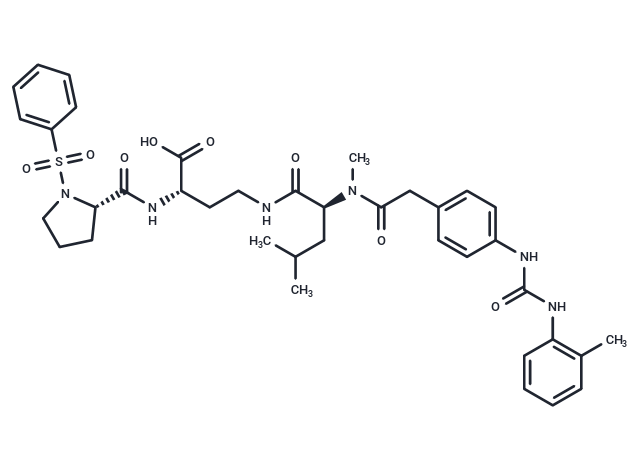Shopping Cart
- Remove All
 Your shopping cart is currently empty
Your shopping cart is currently empty

BIO-7662 is an effective and highly selective antagonist of α4β1 integrin.

| Pack Size | Price | Availability | Quantity |
|---|---|---|---|
| 25 mg | $1,820 | 8-10 weeks | |
| 50 mg | $2,380 | 8-10 weeks | |
| 100 mg | $3,100 | 8-10 weeks |
| Description | BIO-7662 is an effective and highly selective antagonist of α4β1 integrin. |
| Alias | BIO7662 |
| Molecular Weight | 748.89 |
| Formula | C38H48N6O8S |
| Cas No. | 327613-10-5 |
| Relative Density. | 1.316 g/cm3 (Predicted) |
| Storage | Powder: -20°C for 3 years | In solvent: -80°C for 1 year | Shipping with blue ice. |

Copyright © 2015-2025 TargetMol Chemicals Inc. All Rights Reserved.